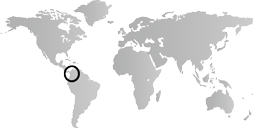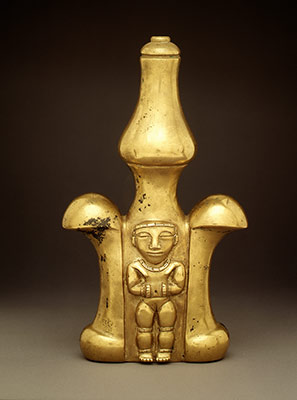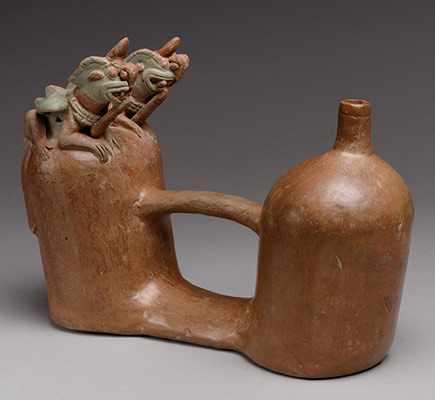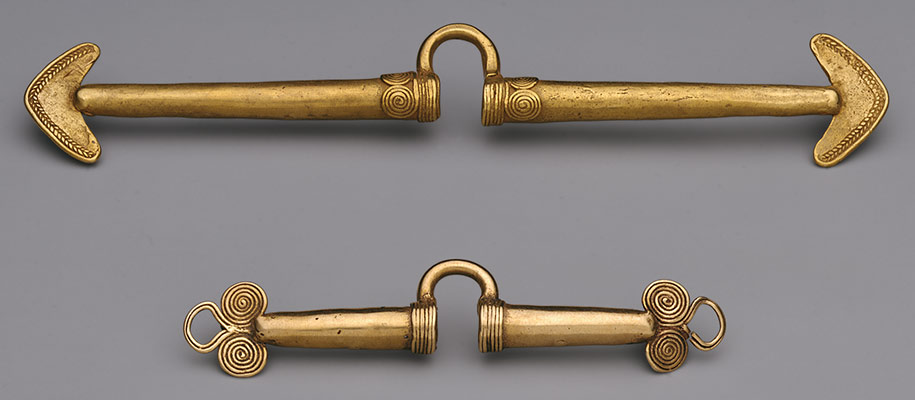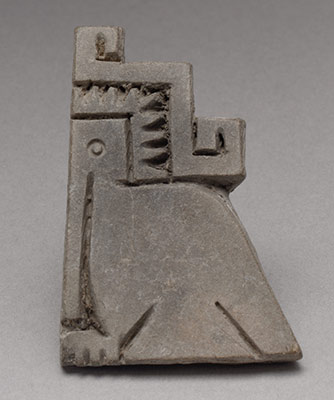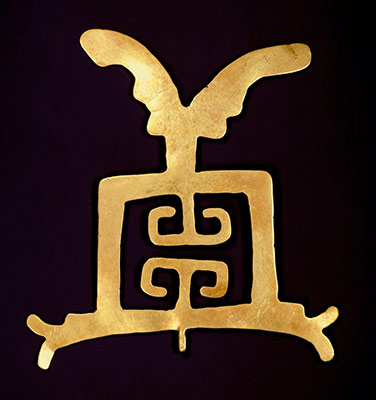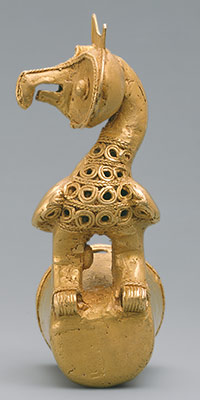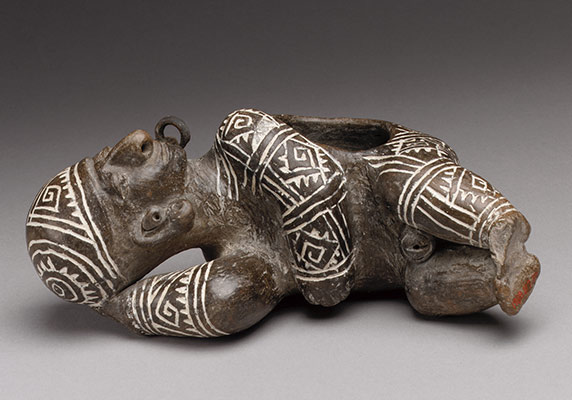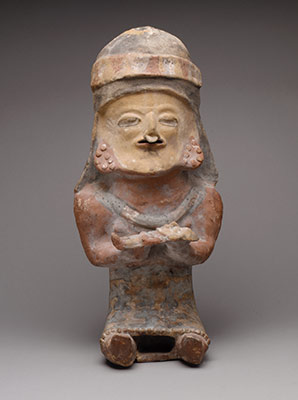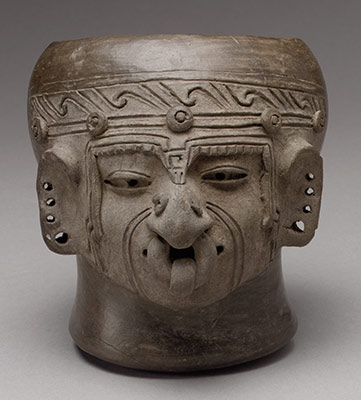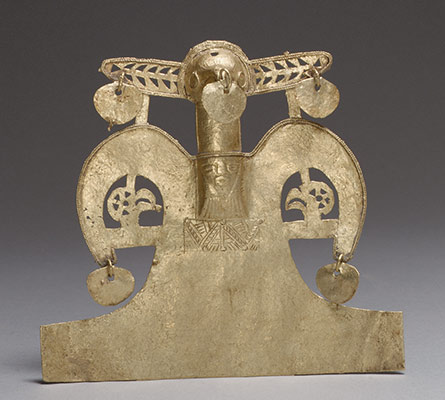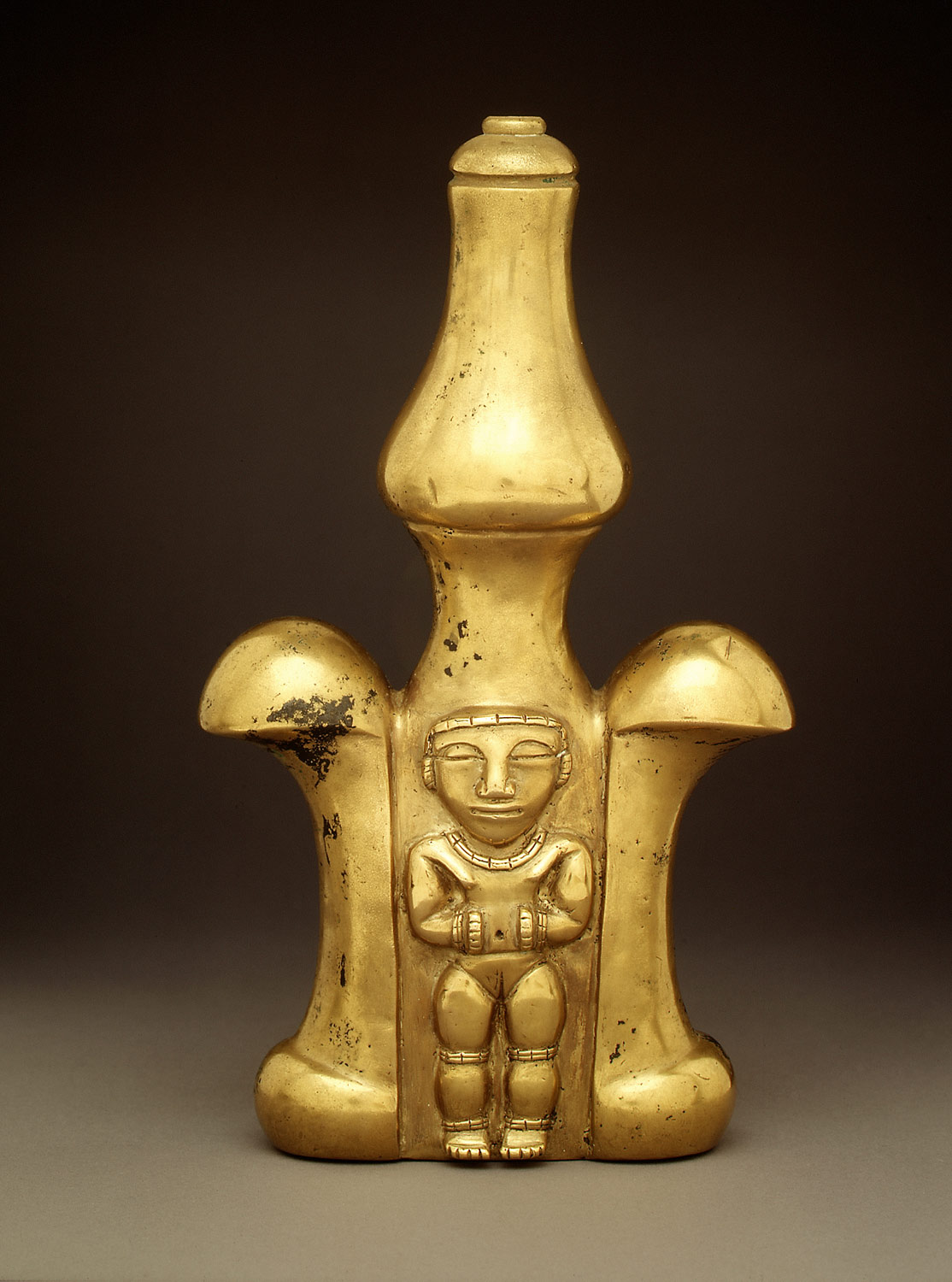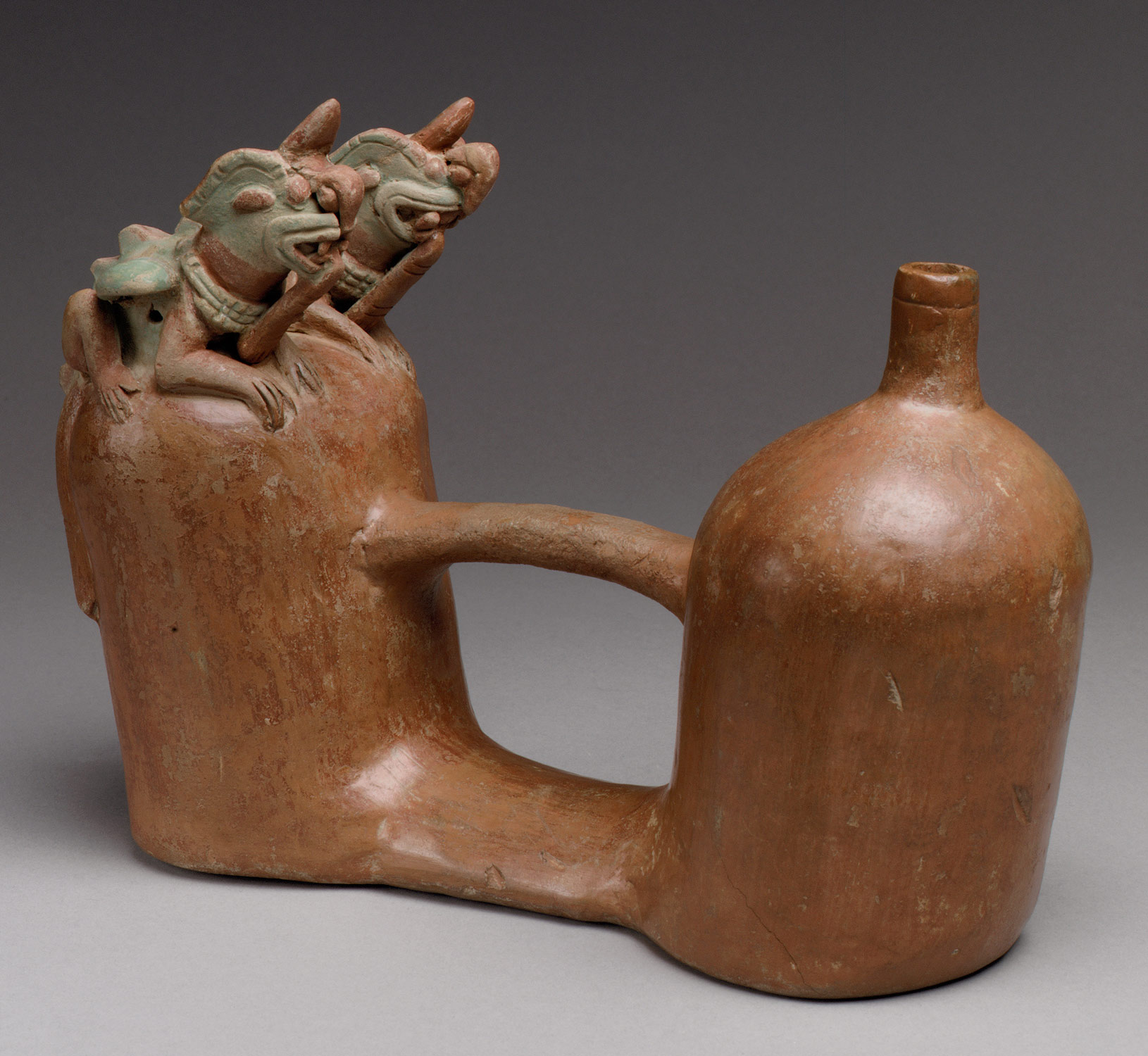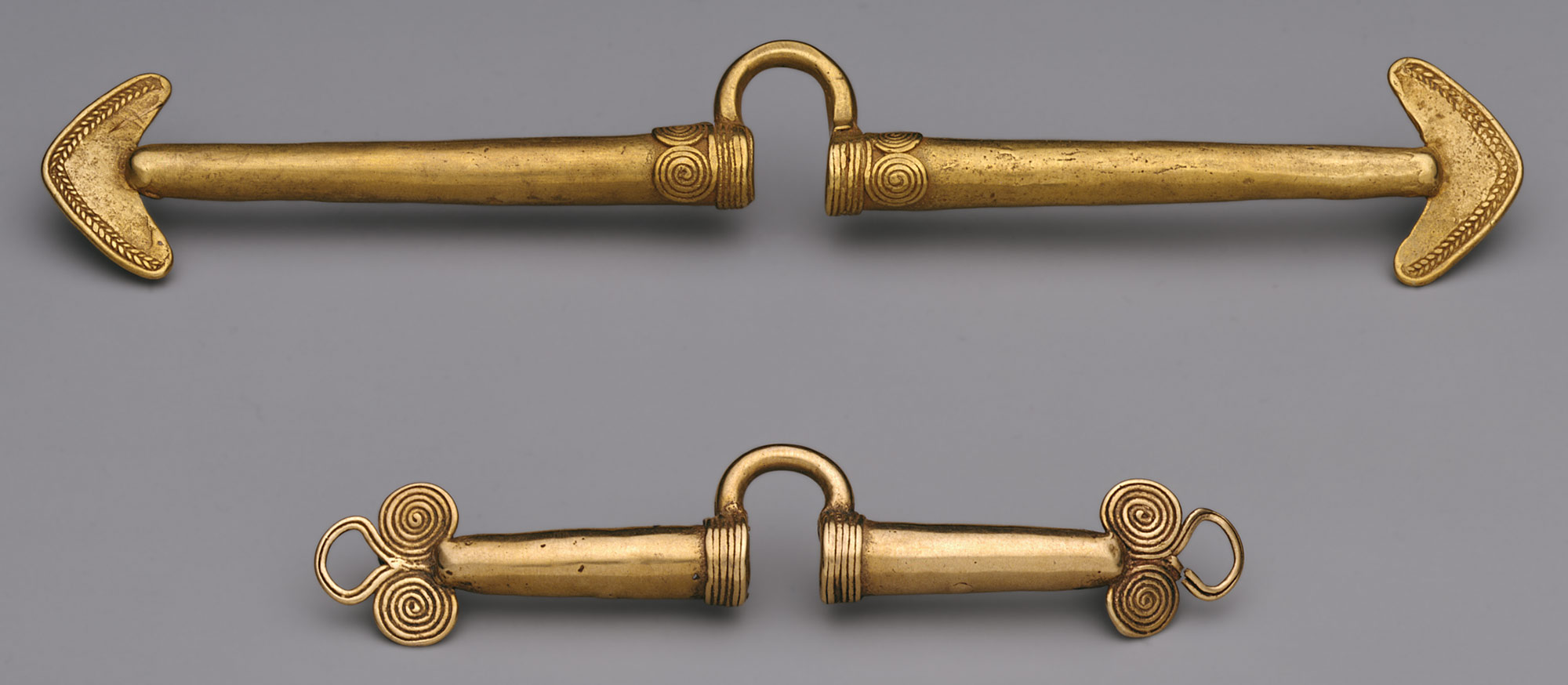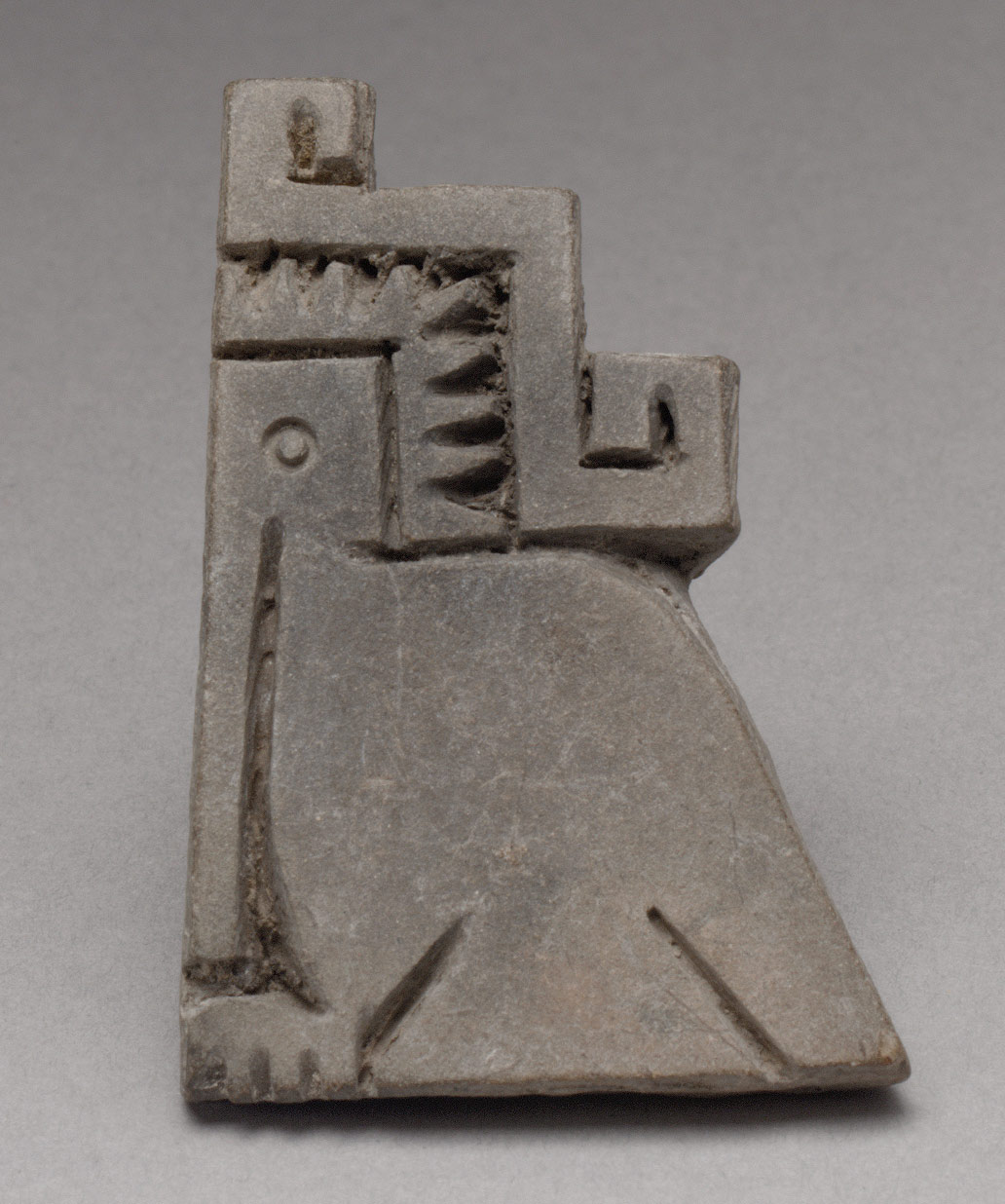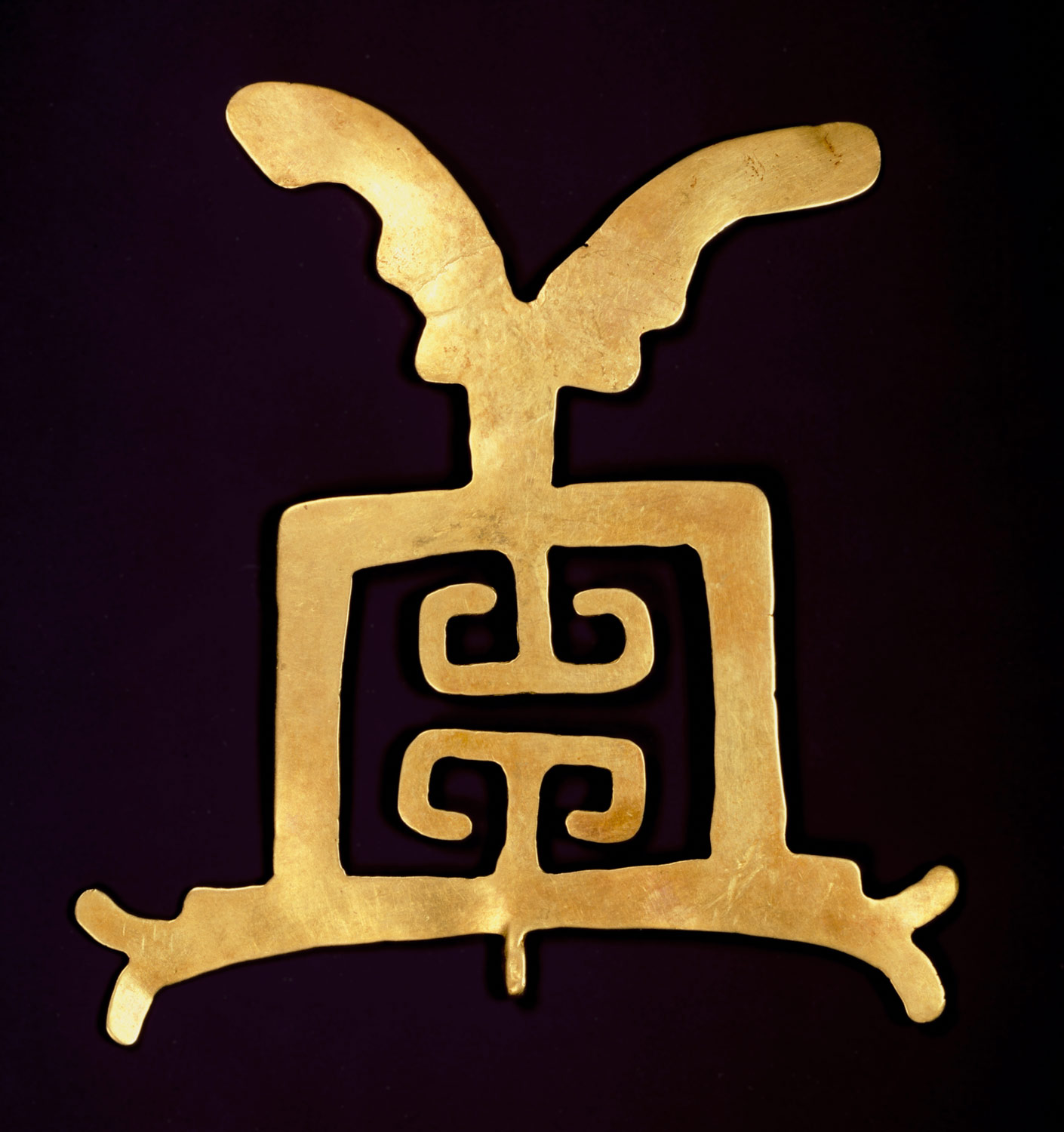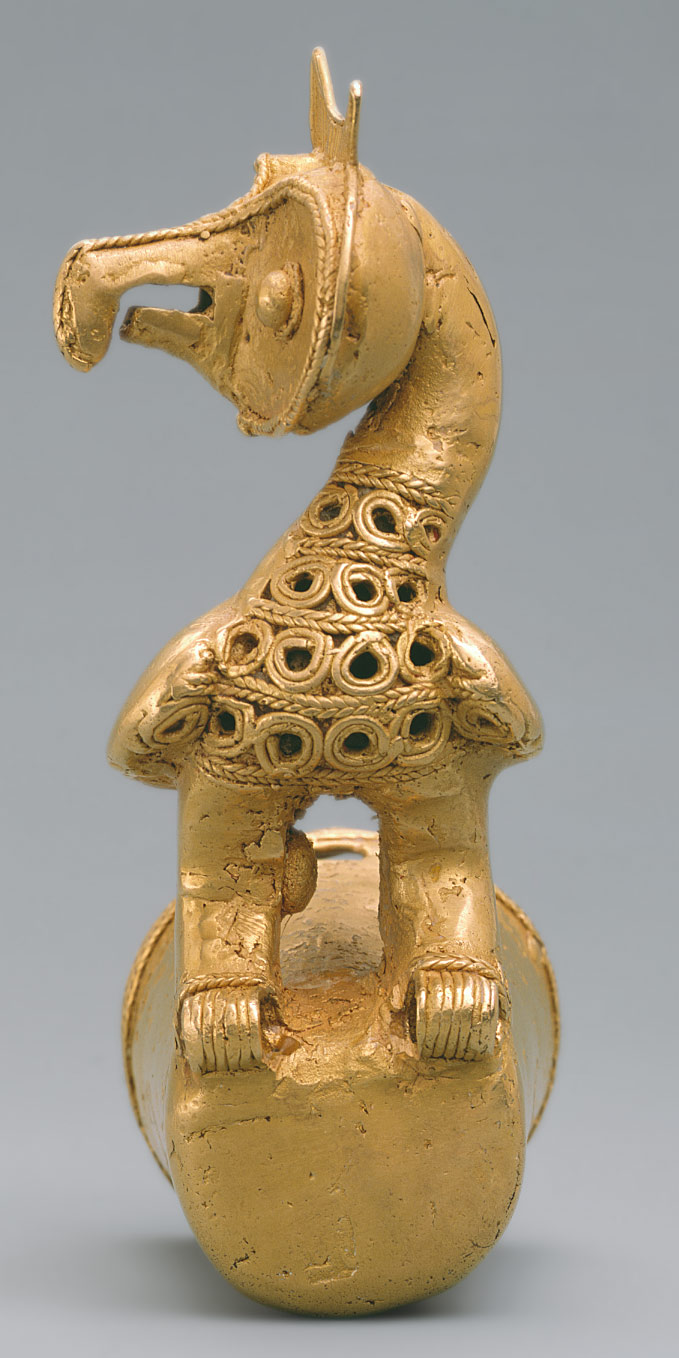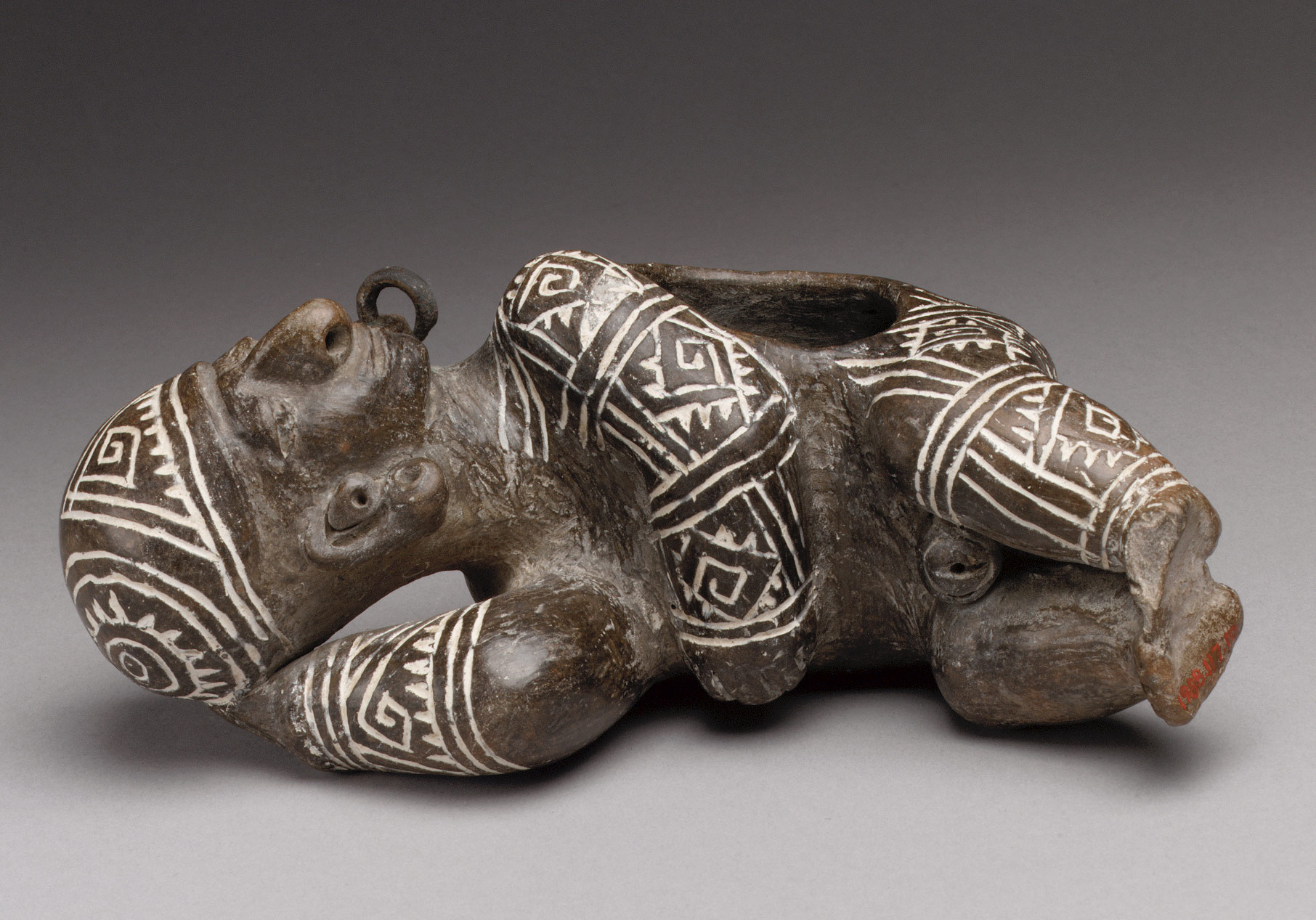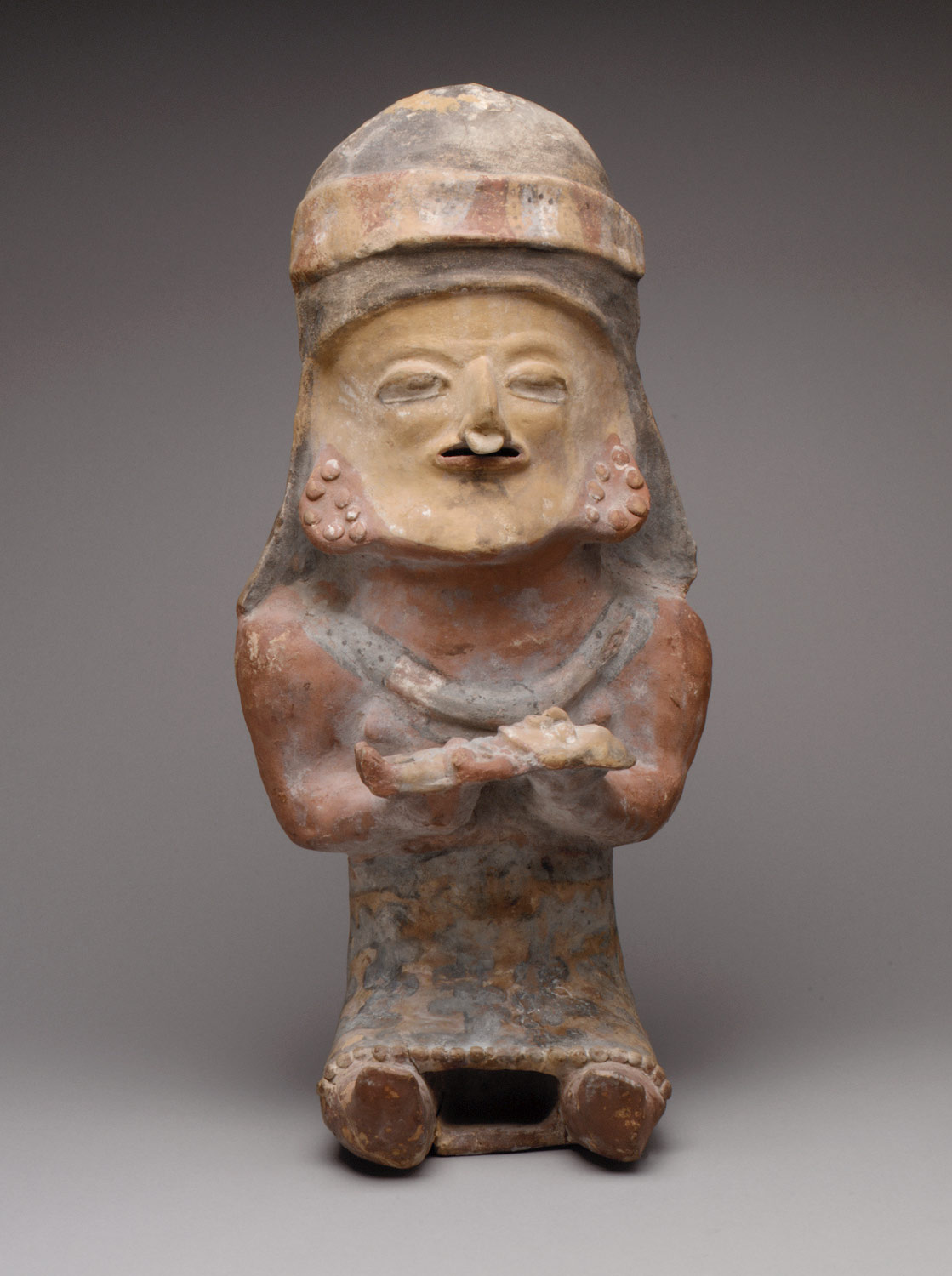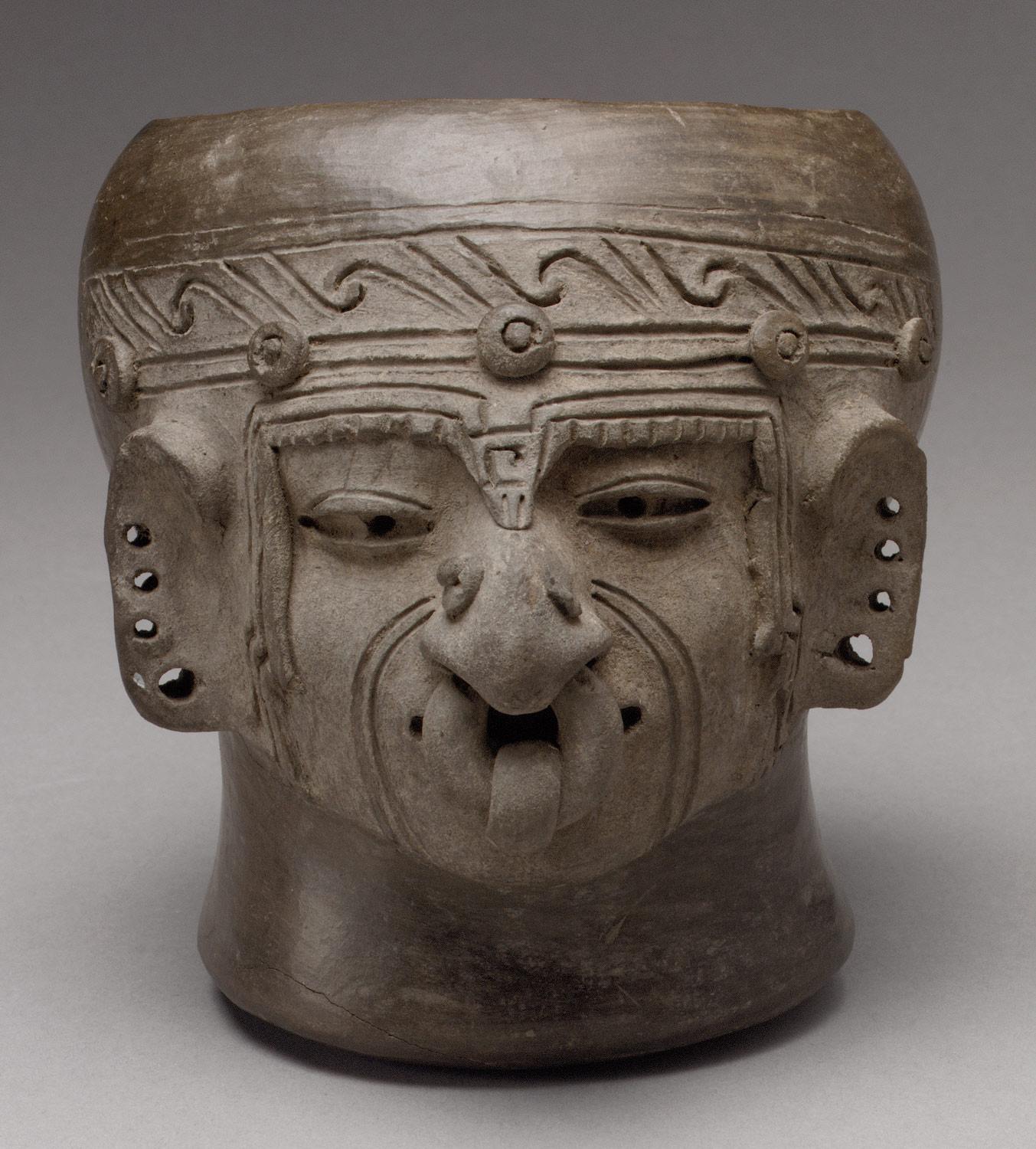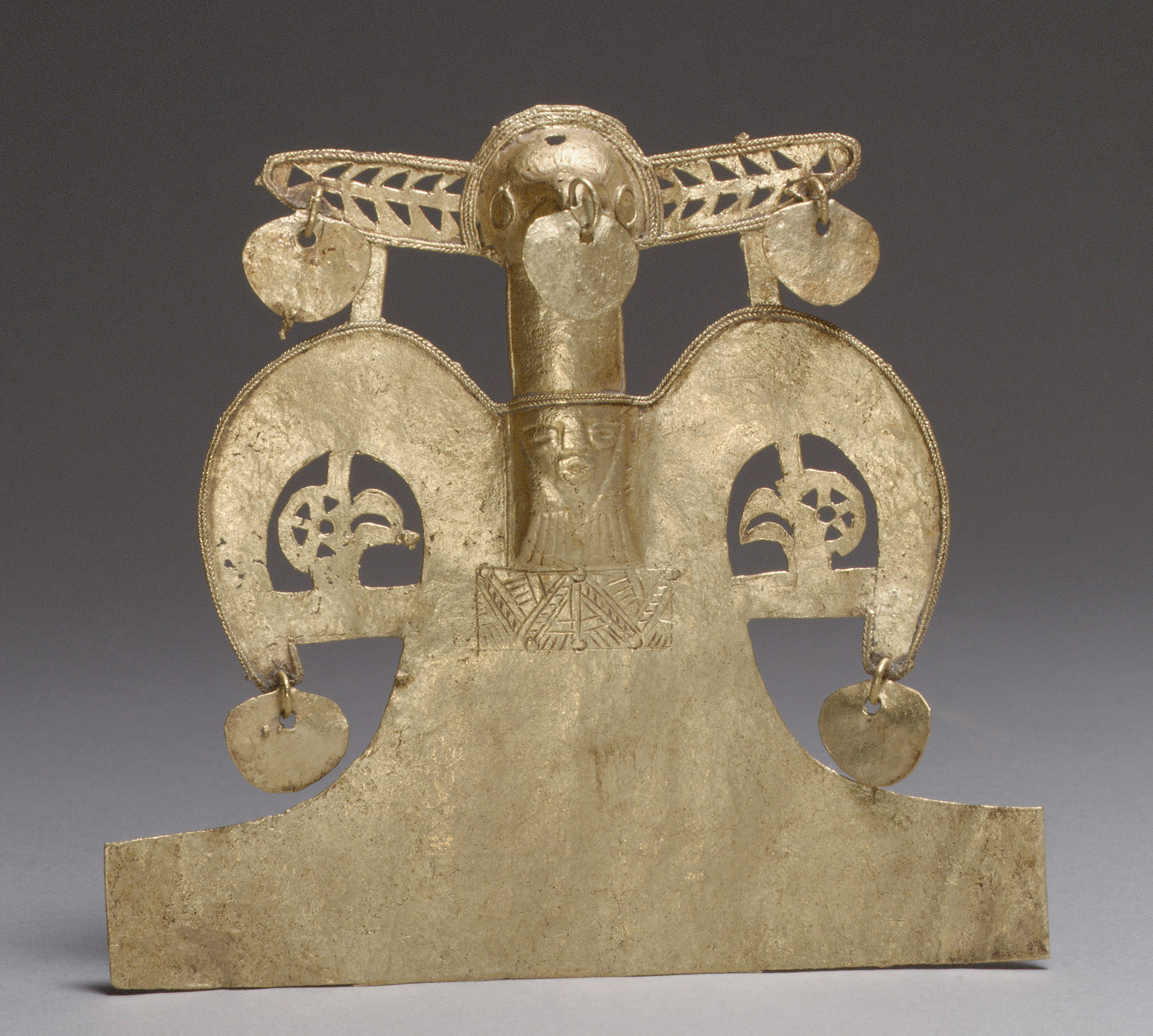Population growth leads to territorial expansion and the integration of smaller groups into larger configurations comparable to city-states in some areas; many settlements become more urban. Class distinctions throughout the region result in increased demand for luxury items and there is an active exchange of goods along well-established trade routes between different environmental zones. Public and ceremonial architecture consists essentially of earthern mounds and platforms, some stone-faced. They serve as substructures for buildings of perishable materials and/or as the location of burials. Important burials are primarily in shaft-and-chamber tombs, often of considerable depth. Resist decoration on ceramic vessels and figures is common. Ecuadorian ceramics are mass-produced and are of lesser artistic quality than earlier works. Metalworking increases and reaches a high degree of artistry, particularly in Colombia, where many different styles exist. Metalworkers use both hammering and casting and a variety of surface decorating and enrichment techniques.
Northern Andes, 500–1000 A.D.
Timeline
500 A.D.
625 A.D.
NORTHERN COLOMBIA
CENTRAL COLOMBIA
SOUTHWESTERN COLOMBIA
ECUADOR
625 A.D.
750 A.D.
NORTHERN COLOMBIA
CENTRAL COLOMBIA
SOUTHWESTERN COLOMBIA
ECUADOR
750 A.D.
875 A.D.
NORTHERN COLOMBIA
CENTRAL COLOMBIA
SOUTHWESTERN COLOMBIA
ECUADOR
875 A.D.
1000 A.D.
NORTHERN COLOMBIA
CENTRAL COLOMBIA
SOUTHWESTERN COLOMBIA
ECUADOR
Overview
Key Events
-
ca. 500 A.D.
Shaft tombs at La Florida, on the slopes of Pichincha volcano near Quito, are forty-five to seventy-five feet deep. Multiple burials of seated persons bundled in textiles hold many offerings of ceramic, bone, and stone. Most of the textiles are cotton.
-
ca. 500 A.D.
The important gold mining center of Buriticá, in the mountains of Colombia’s northern Antioquia Province, exploits rich alluvial deposits and vein gold. Gold objects and raw gold are traded for food, salt, emeralds, and other items with peoples in the north, east, and south.
-
ca. 550 A.D.
Full-time goldsmiths in Colombia’s Sinú River area produce impressive ornaments for the chiefs of their Greater Zenú territory. Typical forms are large, hammered, crescent-shaped breast shields with repoussé decoration, and heavy cast staff finials worked in three-dimensional shapes of local fauna, particularly birds.
-
ca. 550 A.D.
La Plata Island off the central coast of Ecuador houses the principal religious shrine of the Bahía peoples. Numerous ceramic offerings and large quantities of spondylus shells are deposited here as part of ritual activity.
-
ca. 600 A.D.
Near Filandia in the middle Cauca Valley, important individuals are buried with lavish grave goods (now considered to be Quimbaya in style). Among them are magnificent hollow-cast gold flasks known as poporos. The bottles—some shaped as male and female nudes—contain powdered lime made from calcined seashells. The lime is added to coca leaves when chewed during rituals.
-
ca. 650 A.D.
Deep shaft-and-chamber tombs at the sites of Chordeleg and Sigsig in the southern Ecuadorian highlands include Wari-style ceramics and metal objects. Those made of hammered gold and silver show the rayed heads of Wari supernaturals.
-
ca. 700 A.D.
The people in the Tierradentro region of the upper Magdalena River bury their dead in impressive underground rooms cut into the living rock. Accessible by steep spiral staircases, also rock cut, the rooms are circular or oval in plan and up to twenty-one feet below the ground; the most elaborate have niches and square pillars as central supports. The walls are painted with geometric designs in black, white, red, and yellow.
-
ca. 750 A.D.
The Capulí people of the highlands of northern Ecuador and southern Colombia (province of Carchí and department of Nariño respectively) make resist-decorated ceramic figures and vessels; typical are seated female figures with their legs extended forward and males on stools with coca quids in their cheeks.
-
ca. 800 A.D.
The Piartal cemetery at Miraflores near the town of Pupiales covers about 2.5 acres. Multiple burials with rich offerings of ceramics and precious metal are placed in chambers about seventy feet below ground. The chambers have plastered walls painted red.
-
ca. 800 A.D.
The inhabitants of Zipaquirá, Nemocón, and Tausa north of Santa Fé de Bogotá, an area with extensive salt deposits, use earthenware vessels called gachas, to evaporate water from salt. Salt blocks are traded for gold from as far away as 200 miles along the Magdalena River.
-
ca. 850 A.D.
The Manteño, the dominant group of Ecuador’s central and southern coast, use stone to construct house foundation walls and build canals and dig wells up to forty feet deep. To provide arable land for growing populations, they terrace ravines and mountain slopes.
-
ca. 850 A.D.
The chiefdom of Dabeiba, east of the Atrato River in northwestern Colombia, controls the trade route from Urabá to Cartagena. Professional merchants exchange coastal products for gold objects and raw metal from the Greater Zenú region and Antioquia.
-
ca. 900 A.D.
The fertile basins in the high mountains of the eastern Andes in central Colombia are inhabited by the Muisca people, who produce large numbers of votive offerings called tunjos. Cast of tumbaga, a gold alloy containing as much as 70 percent copper, many depict human figures and animals. Items of daily use such as weaving implements, weapons, and cradles with babies are also made. Tunjos are buried or thrown into sacred lakes as offerings to deities.
-
ca. 900 A.D.
Tall ceramic amphoras, known as pondos, with slender, oblong containers and rounded bottoms, are produced in the Tuncahuán area of Ecuador. They are embellished with a variety of geometric designs in negative technique with added details in red paint. The vessels are widely distributed in the northern highland provinces of Carchí and Imbabura.
-
ca. 950 A.D.
Piartal metalworkers produce individual works not related to other styles in the area. Sizable nose ornaments made of hammered sheet, often of low-gold-content tumbaga, display an infinite variety of geometric cutout forms with free-swinging dangles.
-
ca. 1000 A.D.
In the Ecuadorian highlands south of Quito, Panzaleo potters add mica to clay, allowing them to produce vessels with remarkably thin walls. Large jars in the shape of human figures are characteristic. Rotund bodies—up to twenty-eight inches in diameter—form the containers, while the modeled heads serve as spouts. The faces invariably bulge with a coca quid in one cheek.
Citation
“Northern Andes, 500–1000 A.D.” In Heilbrunn Timeline of Art History. New York: The Metropolitan Museum of Art, 2000–. http://www.metmuseum.org/toah/ht/?period=06®ion=san (March 2006)
Related
Map
